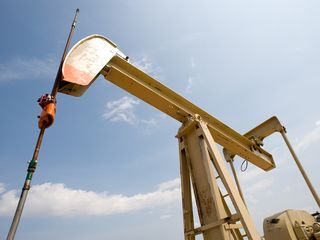
Energy consumption in Niger
The most important figure in the energy balance of Niger is the total consumption ofNiger can partly be self-sufficient with domestically produced energy. The total production of all electric energy producing facilities is 581 m kWh. That is 44 percent of the country's own usage. The rest of the needed energy is imported from foreign countries. Along with pure consumption, the production, imports and exports play an important role.
Back to overview: Niger
Energy Balance
| Electricity | total/year | Niger per capita | USA per capita |
|---|---|---|---|
| Own consumption | 1.33 bn kWh | 50.57 kWh | 11,695.27 kWh |
| Production | 581.42 m kWh | 22.18 kWh | 12,147.64 kWh |
| Import | 1.06 bn kWh | 40.33 kWh | 184.37 kWh |
| Crude Oil | Barrel/year | Niger per capita | USA per capita |
| Own consumption | 5.04 m bbl | 0.192 bbl | 22.498 bbl |
| Production | 2.92 m bbl | 0.111 bbl | 19.630 bbl |
In 2021 there were still 150.00 m barrels of recoverable but not yet used crude oil reserves in the currently known deposits of Niger. Worldwide, there are still proved oil reserves totaling around 1.7 tn billion barrels. Niger therefore has a share of 0.009% and ranks 64th out of 99 countries with crude oil reserves.
CO₂ emissions
| CO₂ emissions in 2020/year | Niger per capita | USA per capita | |
|---|---|---|---|
| total | 2.20 m t | 0.09 t | 13.03 t |
Development of CO₂ emissions from 1960 to 2020 in million tons
See also: CO₂ equivalents by country

Production capacities per energy source
The given production capacities for electric energy for the year 2020 have a theoretical value, which can only be obtained under ideal conditions. They are measuring the generatable amount of energy, that would be reached under permanent and full use of all capacities of all power plants.In practice this isn't possible, because e.g. solar collectors are less efficient under clouds. Also wind- and water-power plants are not always operating under full load. All these values are only useful in relation to other energy sources or countries.
| Energy source | total in Niger/year | Percentage in Niger | Percentage USA | per capita in Niger | per capita USA |
|---|---|---|---|---|---|
| Fossil fuels | 547.12 m kWh | 94,1 % | 16,9 % | 20.88 kWh | 2,054.73 kWh |
| Solar energy | 34.30 m kWh | 5,9 % | 0,9 % | 1.31 kWh | 109.77 kWh |
Usage of renewable energies
Renewable energy includes wind, solar, biomass and geothermal energy sources. This means all energy sources that renew themselves within a short time or are permanently available. Energy from hydropower is only partly a renewable energy. This is certainly the case with river or tidal power plants. Otherwise, numerous dams or reservoirs also produce mixed forms, e.g. by pumping water into their reservoirs at night and recovering energy from them during the day when there is an increased demand for electricity. Since it is not possible to clearly determine the amount of generated energy, all energy from hydropower is displayed separately.If all production capacities in Niger for solar, wind, tidal, geothermal and biomass are added together, this results in a share of 5.9% of the total electricity volume for renewable energies excluding wind power plants. The World Bank, on the other hand, shows a value of 81.9% for the year 2020.
 Greenhouse gases emissions by country
Greenhouse gases emissions by country Global warming by continents
Global warming by continents Tsunamis in Indonesia
Tsunamis in Indonesia